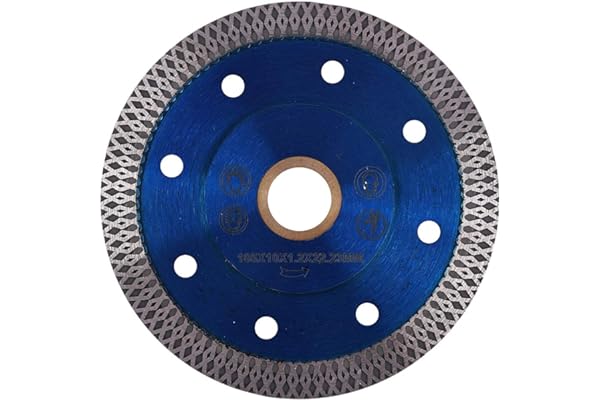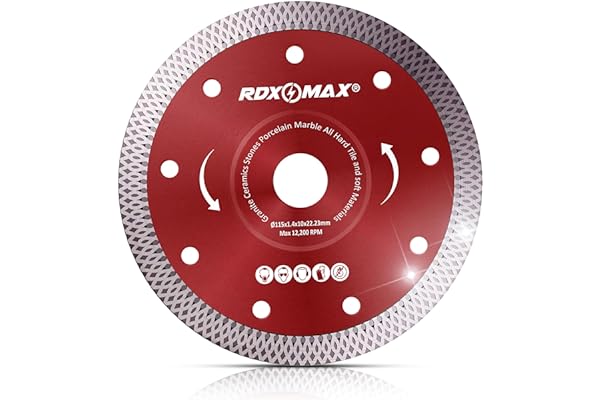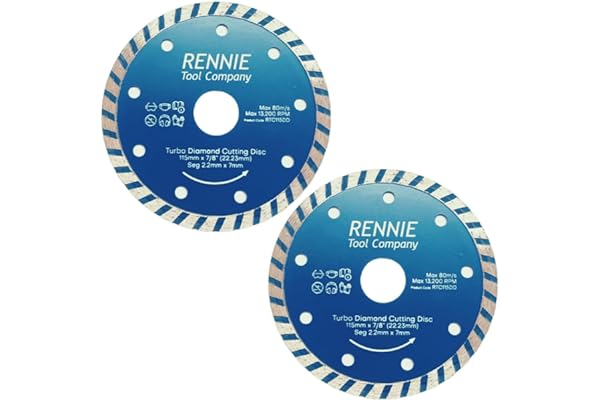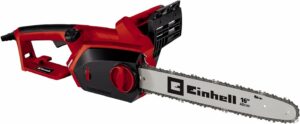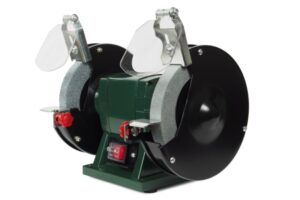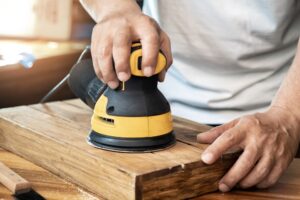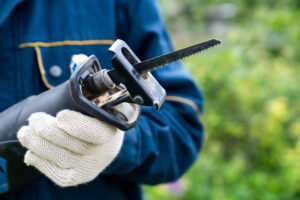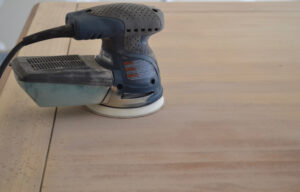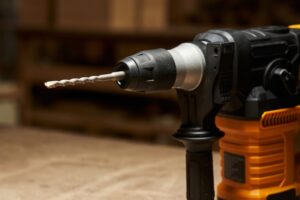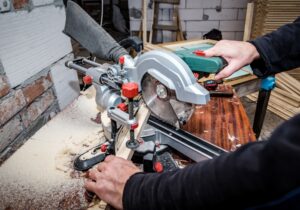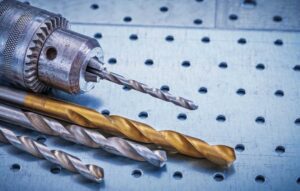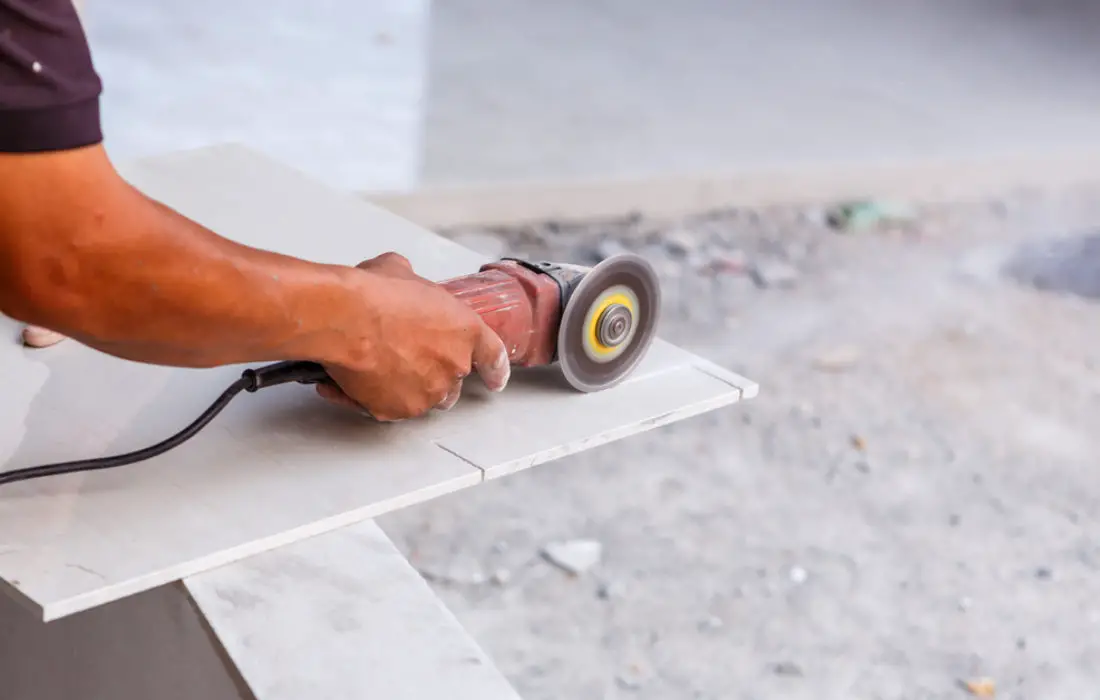
Are you looking to cut porcelain tiles for your next DIY project?
Choosing the right blade for the job is crucial to ensure clean, precise cuts. We have compiled this expert guide to help you select the best blade for cutting porcelain tiles.
Whether you’re a seasoned DIY enthusiast or a beginner, this guide will provide you with comprehensive tips and knowledge on factors to consider when selecting a blade.
- Diamond blades are the most suitable for cutting porcelain tiles because they can withstand the high pressure and heat generated during the cutting process.
- Selecting the right type of blade is crucial for achieving clean, precise cuts on porcelain tiles.
- There are several factors to consider when selecting a blade, such as blade material, size, type of cutting, and RPM compatibility.
- Understanding the importance of the right blade impacts the quality of cuts, blade lifespan, and overall project success.
- Choosing the right blade type, such as continuous rim, turbo rim, or segmented rim, can make a significant difference in the outcome of your project.
Understanding the Importance of the Right Blade
Before we dive into the nitty-gritty of selecting the best blade for cutting porcelain tiles, I want to emphasize the importance of choosing the right blade. The right blade can make or break the success of your project, and it’s essential to choose one that matches your specific needs.
When it comes to porcelain tiles, a low-quality blade can lead to chipping or cracking, potentially causing damage to your tiles. Using the right blade ensures that your cuts are clean and precise, enhancing the overall aesthetic of your project. Additionally, choosing the correct blade can increase the lifespan of your tool, saving you money in the long run.
Using the right blade also ensures that your cutting process is efficient and effective. The wrong blade can make the cutting process slow and tedious, leading to frustration and an unsatisfactory result. Choosing the correct blade allows you to work quickly and with confidence, producing the desired outcome.
Factors to Consider When Selecting a Blade
Choosing the right blade for cutting porcelain tiles requires careful consideration of various factors. Here are the key factors you need to keep in mind when selecting a blade:
Blade Material
The material of the blade is an essential factor to consider. Porcelain tiles are hard and brittle, so it’s crucial to choose a blade that can handle the job. Diamond blades are the most suitable for cutting porcelain tiles because they can withstand the high pressure and heat generated during the cutting process.
Blade Size
The size of the blade is another important factor to consider. The size of the blade you choose will depend on the size of the tiles you’re cutting. Generally, larger blades are suitable for cutting larger tiles, while smaller blades are ideal for cutting smaller tiles.
Type of Cutting (Wet or Dry)
The type of cutting you’re planning to do is also critical when selecting a blade. Wet cutting is the most common method of cutting porcelain tiles as it helps to reduce heat and dust generated during the cutting process. Blades designed specifically for wet cutting are usually more durable and long-lasting.
Dry cutting is another method, but it generates a lot of dust and can damage the blade if not done correctly. If you plan to dry-cut porcelain tiles, make sure to choose a blade specifically designed for dry cutting.
RPM Compatibility with Your Cutting Tool
The RPM (rotations per minute) compatibility of the blade is essential to consider. Make sure that the blade’s RPM matches or is compatible with your cutting tool. Using a blade with the wrong RPM can lead to poor quality cuts, damage to the blade, or even injury.
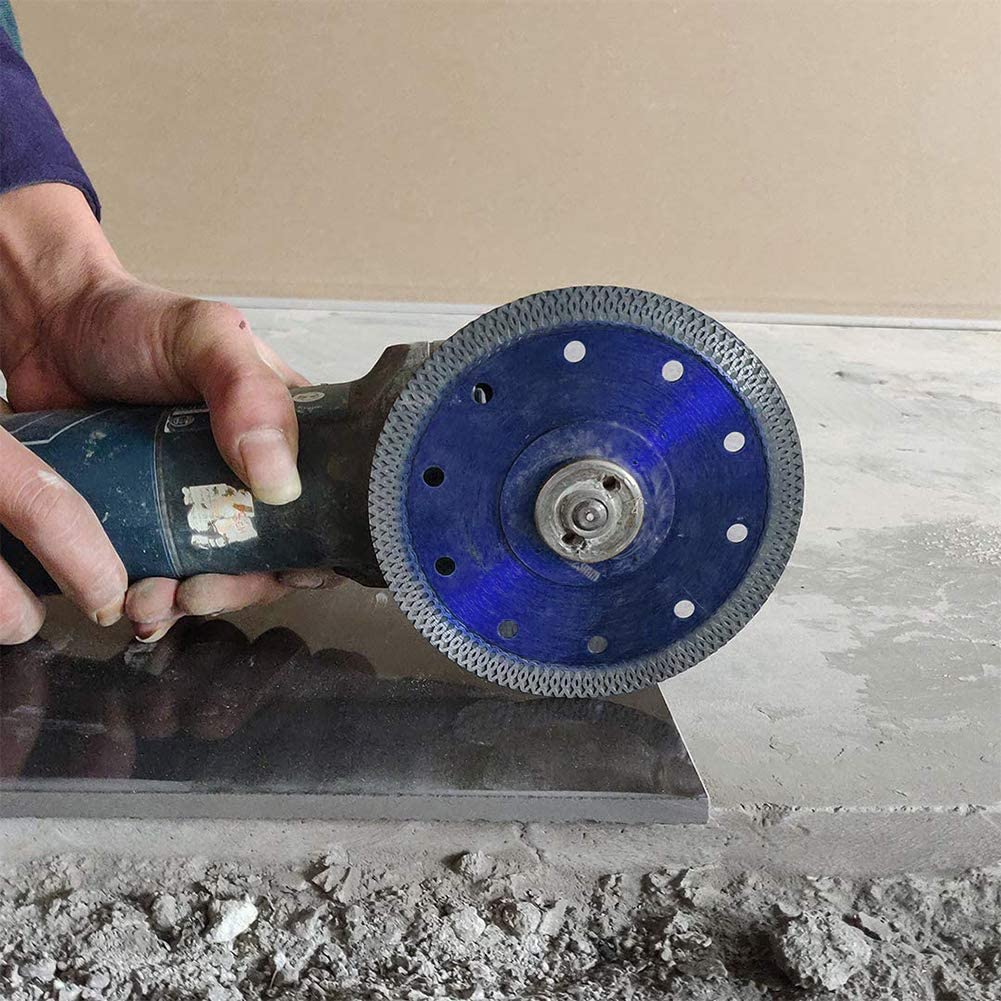
Types of Blades for Cutting Porcelain Tiles
When it comes to cutting porcelain tiles, not all blades are created equal. There are several types of blades available on the market, each with its own advantages and disadvantages.
Turbo Rim Blades
Turbo rim blades are a popular choice for cutting porcelain tiles because they cut through the tiles quickly and smoothly. These blades have a serrated rim with small gaps that allow for efficient cooling of the blade. This design reduces friction and heat build-up, making them suitable for cutting large quantities of porcelain tiles.
Continuous Rim Blades
Continuous rim blades are also known as wet or dry blades and are the most common type of blade used for cutting porcelain tiles. They have a smooth rim with no gaps that provide a clean cut and are suitable for both wet and dry cutting conditions. These blades are ideal for cutting thinner porcelain tiles and smoother edges for a more polished finish.
Segmented Rim Blades
Segmented rim blades are designed with diamond segments separated by slots or gullets to allow for fast, aggressive cutting. These blades are ideal for cutting thicker porcelain tiles, but may not produce a smooth finish on thinner tiles. They generate more heat during cutting, so they are not suitable for use on delicate tiles.
When choosing a blade for cutting porcelain tiles, consider the thickness of the tile, the type of cutting you will be doing (wet or dry), and the finish you want to achieve.
Conclusion
Choosing the appropriate blade for cutting porcelain tiles is a crucial factor in achieving clean, precise cuts. As discussed in this guide, understanding the impact of using the right blade, considering factors like the blade material, size, RPM compatibility, and type of cutting, and knowing the different types of blades available are all essential in making an informed decision.
By following the tips and recommendations provided in this guide, you can be confident in selecting the best blade for your DIY tile-cutting projects. Remember that the blade’s lifespan and the success of your project largely depend on the right choice of blade.
Expert Advice
Always keep in mind that safety is also a critical factor when cutting porcelain tiles. It would be best to wear protective gear, including gloves, goggles, and a mask, to prevent inhaling dust particles. Lastly, ensure that the cutting tool and blade match and are compatible with each other to avoid causing damage or accidents.
I hope this guide helped make your DIY tile-cutting journey more efficient and successful. Happy cutting!
FAQ
What is the best type of blade for cutting porcelain tiles?
The best type of blade for cutting porcelain tiles is a continuous-rim blade. These blades have a continuous rim of diamonds, providing smooth and clean cuts on the fragile surface of porcelain tiles.
Can I use a general-purpose blade for cutting porcelain tiles?
It is not recommended to use a general-purpose blade for cutting porcelain tiles. General-purpose blades are designed for cutting a variety of materials and may not have the necessary diamond concentration or rim shape to effectively cut through porcelain tiles without causing chips or cracks.
Should I use a wet or dry-cutting method for cutting porcelain tiles?
It is generally recommended to use a wet-cutting method when cutting porcelain tiles. Wet cutting helps to reduce heat and friction, preventing the tiles from cracking or chipping. Using a continuous water flow also helps to flush away debris, keeping the blade cool and maintaining its cutting efficiency.
What is the recommended RPM for cutting porcelain tiles?
The recommended RPM (rotations per minute) for cutting porcelain tiles depends on the blade size and manufacturer’s guidelines. It is important to follow the manufacturer’s instructions to ensure optimal cutting performance and blade longevity.
How long does a blade for cutting porcelain tiles last?
The lifespan of a blade for cutting porcelain tiles can vary depending on various factors, such as the quality of the blade, the cutting technique used, and the frequency of use. On average, a high-quality blade can last between 50 to 100 cuts before needing to be replaced.
- Drill Battery Maintenance: Essential Tips for Cordless Drill Battery Care - February 5, 2024
- Troubleshooting Drill Issues - February 5, 2024
- Quick Drilling Techniques - February 2, 2024

